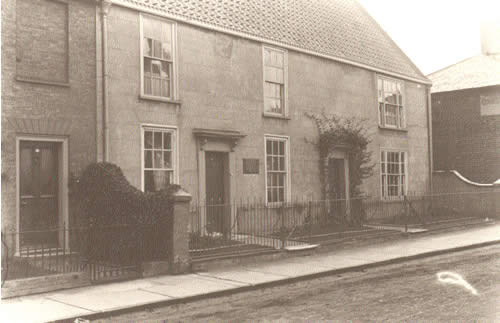How has Southwold been managed since gaining independence?
Dissent has been a feature of local administration since very early on.
From the time of the first charter, power in Southwold rested with 12 ‘Portmen’ plus a common council of 24 local men. Known as the commonality it elected its own coroner. Erected its own gaol and controlled the assize (weight and price) of bread and beer. The Bailiffs were the magistrates and held Quarter Sessions and Courts of Record.
From the first Charter of 1489 up until the last in 1690 Southwold
was given independence and the right to hold two weekly markets and two
annual fairs. Here, Southwold's Bellman, John Barber, calls the town to
silence for the formal reading of the Charter at the opening of the Spring
Charter Fair.
To see a short movie of the Bellman in action, press 'play' below
Movie copyright of John Nottage
After the first reading of the Charter it has become the custom for the entire Town Council and Bellman to take to the Dodgems in full regalia! Click 'play' below.
Movie copyright of Penny Ewles-Bergeron
The tradition is not a new one. In the late 1920s Barrett Jenkins recorded these scenes at Trinity Fair. Councillors let their hair down rather more sedately in those days ... on the roundabout!
By 1685 the Town Assembly (as it had become) was choosing Chamberlains, Coroners, Fen Reeves, Sergeants at Mace, constables and Surveyors. Legal and professional advice was given by the High Steward, an office held by a person of local consequence.
The petty business of the Borough was done at the Market Cross until its transfer to the old Guildhall. This stood on Bartholomew Green until its demolition in 1815.
King Charles II, noting Southwold’s nonconformist sympathies, (See CHRISTIANITY) removed the existing Assembly and installed a new Corporation. King James II put Southwold under the administration of his own nominees (Sir John Rous, Thomas Allin and Edward North). Ultimately these were rejected by the townspeople and, in 1690, the dissenting Bailiffs were reinstated.
By the turn of the 18th century the town’s finances had begun to founder. In 1814 Robert May, salt merchant, was declared bankrupt as Corporation property had been mortgaged to him personally. By 1827 the financial burden was so serious that a committee was set up to suggest economies.
Withdrawal of the Vicar’s Poor Allowance only increased the dissent in the town leading to protests instigated by the Rev John Robinson and this led, in turn, to the arrival of the Municipal Reform commissioners. They proposed that the Bailiffs should be replaced by a Mayor, 4 Aldermen and 12 Councillors.
The first Mayor to be elected was William Crisp, a brewer. He was succeeded by Robert Wake (below) the town historian ...

... and then John Sutherland (a Scottish army surgeon who came to Southwold to practise medicine).

Sutherland House is a restaurant today but dates back to 1455. The
name is relatively recent, stemming from the 19th Century when it was
the home of the surgeon, John Sutherland who was one of the town's first
mayors. The picture is dated 1896. Click the picture to visit the history
page of the Sutherland House Restaurant website. And visit our WAR storyline
to learn about the role of this house in the Battle of Sole Bay. P1479
In 1974, under the provisions of the Local Government Act, most of the powers and assets of Southwold Borough Council (excluding Godell’s Common and Marshes) were handed over to Waveney Borough Council. Southwold changed from being self-contained and self-supporting to having few remaining powers to run the town and harbour. Self-sufficiency was no longer possible.
Click on the link to Ronnie Waters' article in the right hand column to learn more about William Godell's bequest to Southwold.